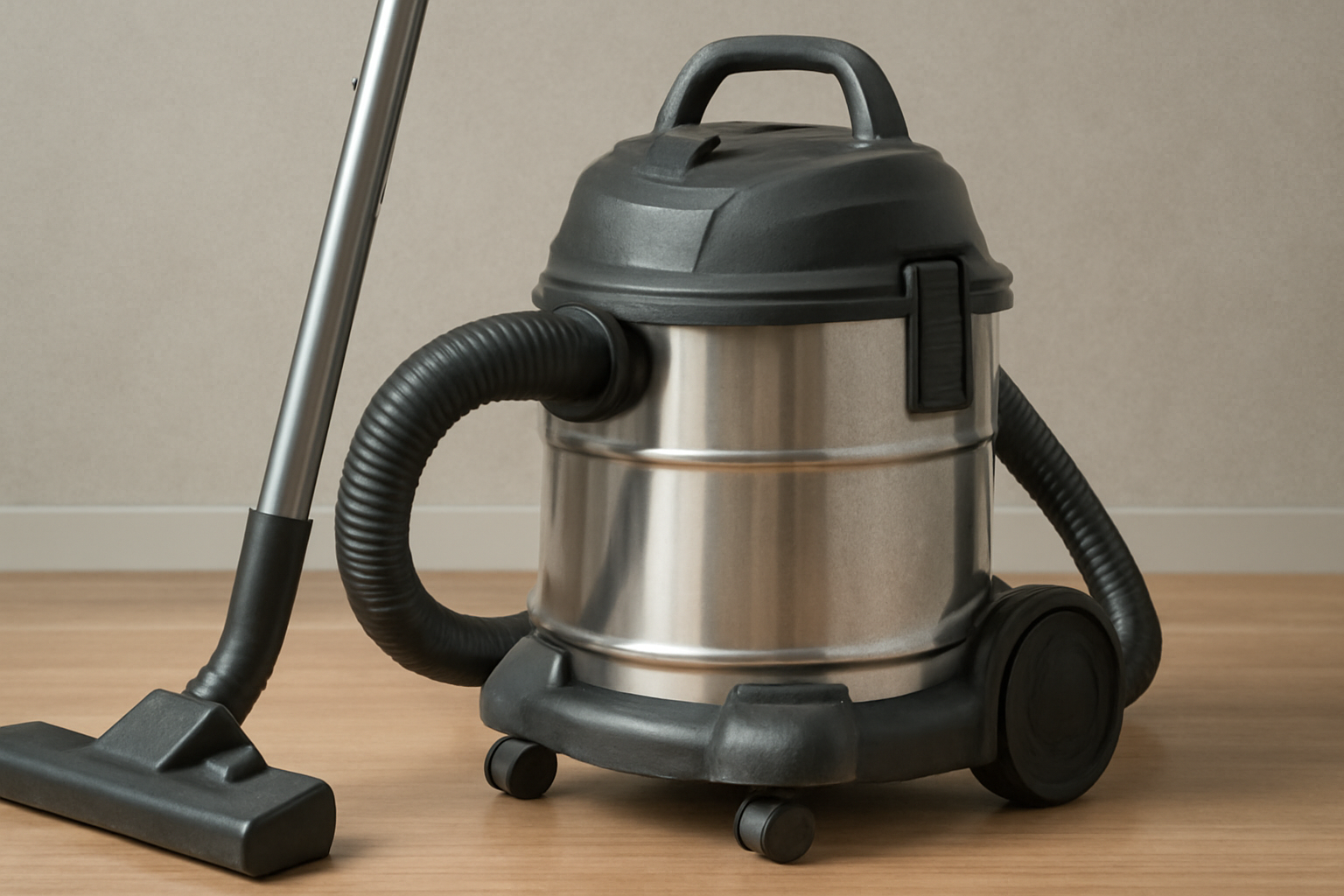
Every vacuum manufacturer believes their product is “reliable.”
Every QC team claims “all tests passed.”
Every distributor expects “no early failures.”
Every engineer says, “We followed the checklist.”
And yet…
Real-world failure rates continue rising globally — especially in EU, US, and Middle Eastern markets.
Why?
Because the industry is still ignoring hidden failure modes — problems that don’t show up during factory QC, but destroy product performance during real consumer use.
This article reveals the failure modes that quietly kill Upright Vacuum Cleaners and Household Vacuum Cleaners — based on 100+ teardown audits, long-term durability tests, and worldwide distributor return data.
These are not surface-level issues.
These are deep engineering realities.
🧩⚙️ 1. Micro Air Leakage: The Silent Killer That No QC Checklist Catches
Air leakage of 0.4–1.2 mm is enough to trigger:
suction instability
cyclone inefficiency
dust bypass
overworked motors
overheating
HEPA loading
early noise drift
But most factories only visually check seals.
The real world requires:
pressure-drop measurement
dynamic airflow simulation
seal compression consistency tests
sealing aging under heat & humidity
One small leak can destroy performance in a Multi-Functional Durable Vacuum Cleaner or premium Vacuum Cleaner for Allergies model.
Factories continue missing this.
🌀🔥 2. Airflow Turbulence Caused by Poor Geometry (Not Poor Motor Quality)
Most suction complaints aren’t motor problems.
They’re geometry problems:
duct angles too sharp
cyclone inlet too narrow
turbulence in dust bin chamber
air channels misaligned
structural resonance inside ducts
HEPA back-pressure too high
A badly designed duct reduces suction by 15–25% — even if the motor is perfect.
This is why many “high-spec” vacuums fail to outperform low-cost units.
Motor performance ≠ total performance.
🏋️♂️🔧 3. Brushroll Torque Surges That Destroy Motors Over Time
Torque surging happens when:
hair wraps around the brushroll
carpet friction spikes
sand increases resistance
bristles deform
bearings wear
This creates sudden torque jumps that overheat the motor and PCB.
Symptoms:
motor pulsing
sudden power cuts
burnt smell
heat rise in turbo mode
early motor wear
Even a Fast Lightweight Vacuum Cleaner suffers catastrophic failure if torque calibration is missing.
Less than 5% of factories test torque-load curves.
This is a major blind spot.
🔩🧲 4. Rotor Imbalance: The Source of Noise Drift and Vibration After 30–90 Days
A perfectly new vacuum may sound smooth at first.
But after a few weeks…
noise increases
vibration appears
user says: “It wasn’t this loud before.”
This is caused by rotor imbalance, triggered by:
bearing micro-wear
dust entering rotor chamber
temperature cycling
magnet shift
rotor coating degradation
Rotor imbalance leads to:
reduced motor lifespan
high-frequency whine
vibration in handle
unstable suction
This failure mode is invisible during QC
yet devastating in the real world.
🔥📉 5. Heat Creep: The Slow, Invisible Motor Death No One Talks About
Heat creep = temperature rising slowly over time due to:
partially clogged filters
dust accumulated in cyclone
worn seals
brushroll resistance
high mode usage
poor ventilation
This is why vacuums with perfect-day performance fail after:
60 hours
100 hours
180 hours
Heat creep is the No.1 cause of:
motor burn
PCB failure
noise increase
melted ducts
battery stress
Most factories test heat only on day one.
Real consumers stress-test vacuums for years.
🪫⚡ 6. Battery Degradation Under Real Use (Not Laboratory Conditions)
Real households use vacuums differently:
longer cycles
repeated boosts
incomplete charging
partial charging
high-temperature rooms
carpet resistance overloading
The result?
Battery degradation accelerates 2–3× faster than lab predictions.
This affects:
suction consistency
motor speed
runtime stability
auto-mode performance
battery overheating
A “long-life battery” is meaningless if tested under unrealistic conditions.
🧲🔌 7. PCB Stress From Motor Overload — The Industry’s Most Ignored Failure Mode
When a motor faces:
torque spikes
airflow blockage
filter resistance
hair jams
…the PCB driver experiences:
voltage surge
switching frequency spike
thermal stress
MOSFET overload
capacitor fatigue
PCB failure looks like:
won’t turn on
random shut-down
turbo mode failure
sensor malfunction
blinking error lights
The PCB becomes the new weak link.
This is why even best budget vacuum products are failing faster in 2025.
🧪📏 8. Plastic Aging & Deformation Under Heat + Dust Load
Plastic parts deform due to:
heat cycles
dust pressure
UV exposure
humidity
mechanical stress
This leads to:
duct misalignment
seal failure
structural vibration
dust container warping
cyclone inefficiency
A vacuum’s internal geometry shifts over time —
and performance collapses.
Factories still underestimate how much dust adds structural stress.
🎧⚙️ 9. Noise Drift: Why Quiet Vacuums Don’t Stay Quiet
A vacuum may pass noise tests at the factory.
But in real homes:
dust changes airflow
bearings wear
brushroll imbalances
rotor aging
sealing compression loss
HEPA clogging
This causes:
tonal shift
pitch increase
vibration noise
airflow hiss
cyclone whistle
Noise drift = early customer dissatisfaction.
This affects especially:
Quiet models
Allergy-friendly models
Premium cordless units
🧪🔍 10. Why 2025 Requires New Failure-Mode Thinking
The industry still relies on:
static QC
short-term testing
visual inspections
sample-based checks
But modern vacuums require dynamic failure-mode engineering, including:
✔ dust-load performance
✔ torque surge mapping
✔ heat creep simulation
✔ long-term airflow stability
✔ rotor imbalance prediction
✔ PCB surge protection validation
✔ sealing compression aging
Factories that do not evolve will continue producing:
unstable suction
inconsistent noise
premature motor failure
high return rates
damaged distributor trust
Vacuums must be engineered for reality —
not laboratory conditions.
Suitable For
EU/US/GCC vacuum distributors
engineering teams
QC directors
sourcing managers
product owners
technical founders
home appliance brands
OEM/ODM factories
Hashtags
#lanxstar #uprightvacuumcleaners #householdvacuumcleaners #multifunctionaldurablevacuumcleaner #fastlightweightvacuumcleaner #bestbudgetvacuum #vacuumcleanerforallergies #failuremodeanalysis #motorengineering #airflowdesign #heatcreep #pcbstress #torquesurge #cyclonedesign #ductengineering #brushrolltechnology #rotorbalancing #productdurability #engineeringsolutions #oemodm #chinavacuumfactory #vacuumperformance #qcengineering #noisecontrol #runtimeengineering #mechanicaldesign #vacuuminnovation #globaldistributors #usmarket #eumarket #gccmarket #heatmanagement #sealingtechnology #smartcleaning #floorcaretechnology #premiumvacuum #budgetvacuum #productreliability #industrialdesign #airpressuretesting #engineeringtruth #homeappliances #cleanhome #vacuumindustry2025 #vacuumtesting #valuevacuum #advancedcleaningtools
















